ASRock FM2A88X Extreme6+ Review
by Ian Cutress on March 19, 2014 11:59 AM ESTASRock FM2A88X Extreme6+ BIOS
ASRock’s graphical BIOS now sits and a relatively happy plateau. After the first couple of generations, we have a system that is easy to read, easy to follow and is aesthetically pleasing to look at (in my opinion at least). The white on black with the high image quality background at least is better than most, with higher definition images being used in the BIOS throughout. ASRock has a tendency to try out a lot of new things with a chipset release, see which ones users respond to and develop those in future releases. In FM2+ however, there is not that much extra from FM2/A85X, due to the similarities of the platform.
The screen we first get into is called ‘Main’, and gives us the motherboard being used, the BIOS revision, the CPU name and speed as well as the total memory installed, where it is installed, and how fast it is running at. This is 85% of what I want in the front screen on a motherboard: other features such as CPU temperature, voltage and fan speed would also be welcome. There is an option to adjust the point of entry into the BIOS, thus enthusiast users such as overclockers can boot straight into the OC Tweaker menu.
The OC Tweaker menu separates out all the main overclocking options into sections for the CPU, DRAM and voltage. At the top is an EZ OC Mode (‘Easy Overclocking’), which offers options from 4000 MHz to 4500 MHz with our A10-7850K.
For finer tuning of the DRAM timings, the DRAM Timing control should be adjusted to manual. Unfortunately this is a little confusing here – ASRock should have an ‘Auto’ option for all the memory sub-timings in case a user wants to adjust just one.
The ‘Advanced’ tab gives further submenus relating to CPU, North Bridge, South Bridge, Storage and Super IO configurations. In the CPU Configuration menu, features such as ‘Target TDP’ are present, such as when using the A8-7600 Kaveri APU, which can be used in 65W or 45W mode.
Whenever ASRock adds new utilities to the BIOS, they typically go under the Tool tab. Here we have features that have graduated through multiple generations, such as the System Browser which gives a visual representation of the motherboard along with all the equipment installed:
There is also the Online Management Guard, which disables the network ports when the BIOS reaches certain hours of the day:
One of the newer features in the Tool menu is the Dehumidifier function, which we have covered in previous reviews. This allows the PC to enter a semi-sleep state to keep the fans spinning after the PC is turned off in order to equilibrate the air temperature inside and outside the case. In high humidity environments this helps reduce condensation inside the case as the PC cools naturally by forcing the equilibration. After talking with ASRock at Computex, ‘Dehumidifier’ works as an explanation in Chinese, although I think a little is lost in English as that word has a specific meaning. Nevertheless whatever the name, the feature is the same in any language.
The fan controls are in the HWMonitor menu, which gives our temperature sensor readings as well as fan speeds and voltages. For fans in the BIOS, ASRock gives pre-determined fan controls or allows users to specify a multi-point gradient:
I want to see this in every BIOS from every manufacturer. The only step up for this would be to combine something like MSI’s fan control representation system, along with a fan testing tool similar to what we see with Biostar, and we might actually have something approaching a proper adjustable fan control in a graphical setting in a BIOS.
Unfortunately one thing missing from the ASRock BIOSes is a Boot Override feature. Whenever I want to boot from a device once, I would like the option in the BIOS just to select that device and instantly boot from it. Almost all other BIOS manufacturers have this option, however in this regard ASRock is a little behind – the user needs to adjust the boot order to do so.


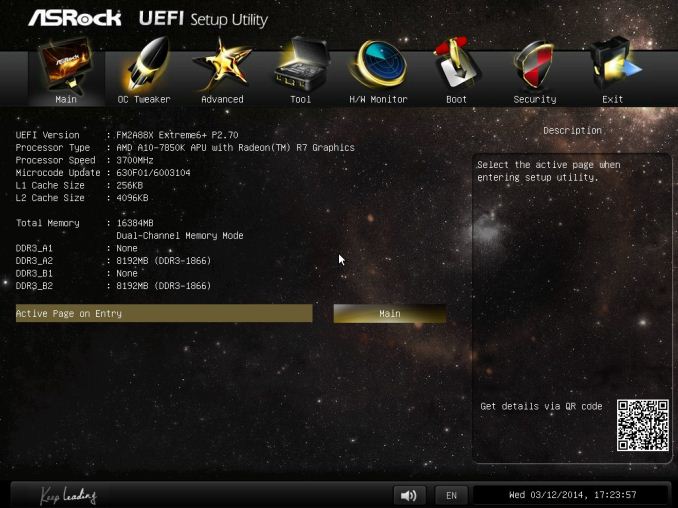

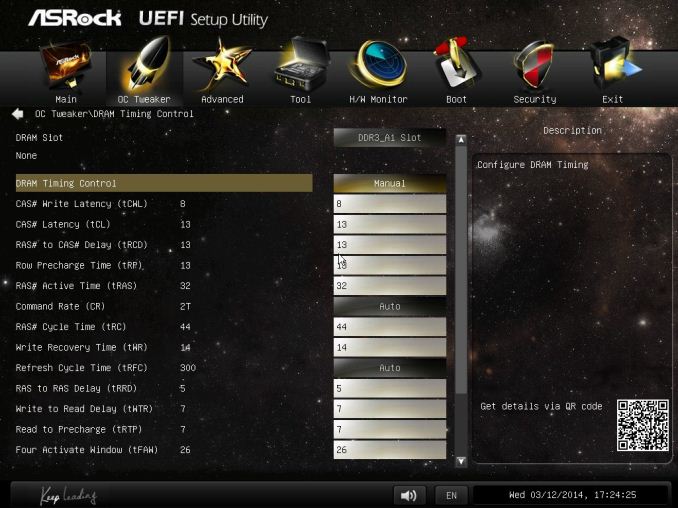
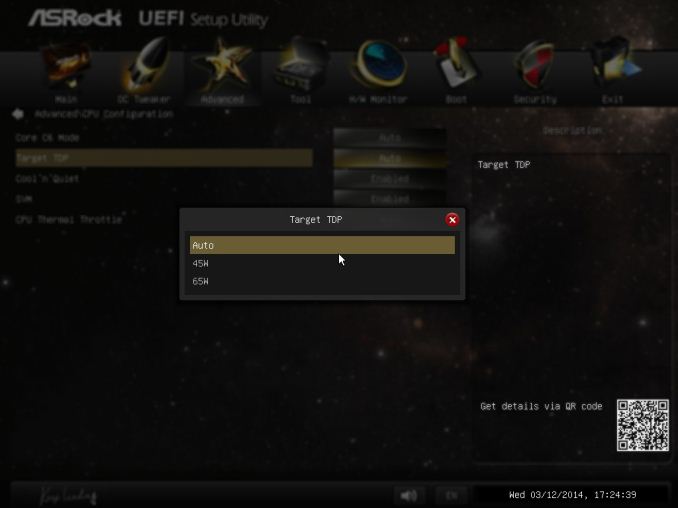
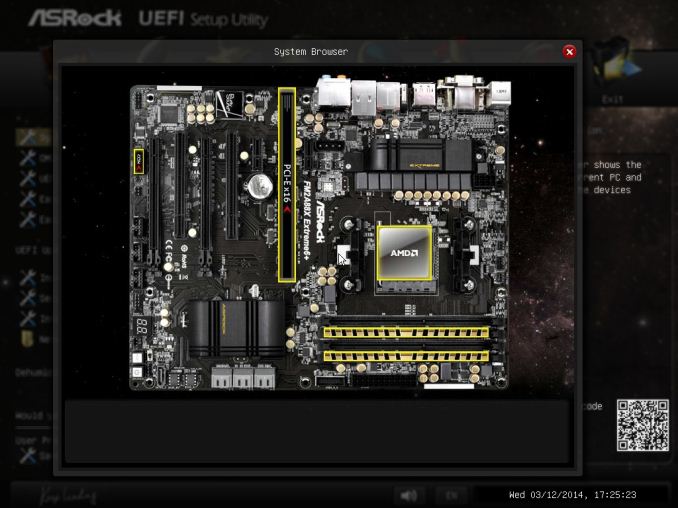
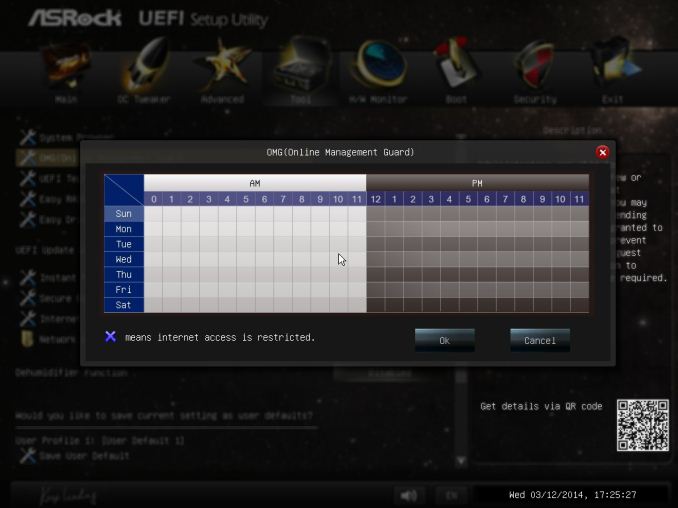
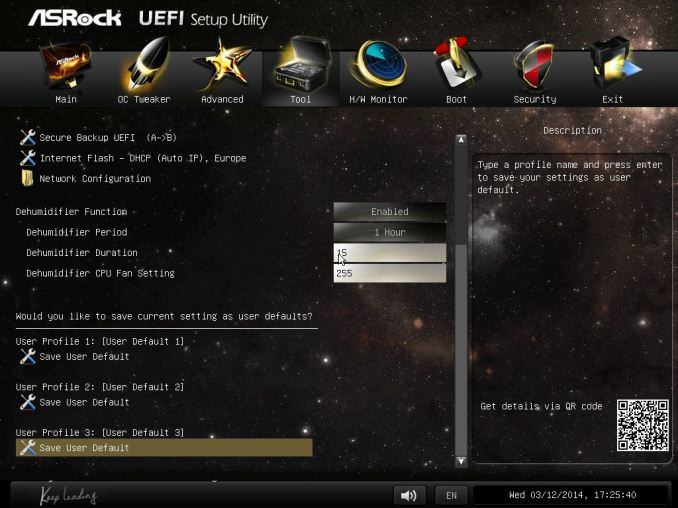
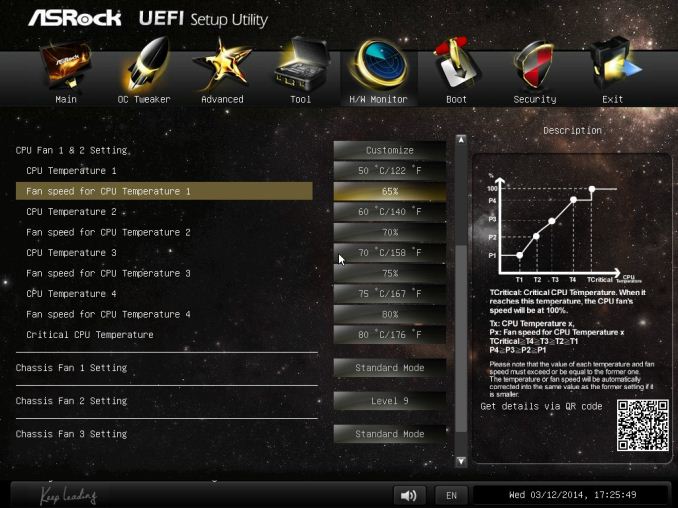














44 Comments
View All Comments
fteoath64 - Friday, March 21, 2014 - link
AMD/ATI needs to be very aggressive in lowering the power demands of their gpu. What NV has done in Maxwell should tell them a very important thing. Lowering the power demands means, one can cram more cores into the die, hence it will boost performance. There is so much one can cram into a specific node-technology but the power demands meaning heat dissipation is going to be a real issue that is hard to solve.With the latest R9 series running at such high heat and high power demands, it is going to impossible to cram even half that performance into an APU without resorting to water cooling so the challenge is huge for AMD to tackle. I hope they can make headway into power optimization so that we can get more serious APU chips with powerful gpus for once and help move the industry along.
Ammohunt - Thursday, March 20, 2014 - link
cpu performance is one thing getting a stable glitch free windows system has always been the true challenge. I had never seen a Win7 BSOD until i ran an FX-6100 AMD Build which i promptly replaced with an intel rig. As a server it runs linux like a champ though.Demiurge - Friday, March 21, 2014 - link
I have multiple laptops, all Intel based, at work that BSOD Win7. It isn't the CPU, it's the drivers. I know because mine doesn't crash anymore after updating the drivers. I'm pretty sure it isn't the CPU that was the weak point of failure in most problems because the CPU is one of the few things that gets tested and validated the most. Not saying it can't happen, but it is far more likely you or the device manufacturers screwed up. Trust me, I own a Creative X-Fi =)... sometimes I don't get sound on reboot. I know the hardware's good there too.MrBungle123 - Friday, March 21, 2014 - link
I've noticed instability with AMD rigs before and discovered that the issue was that the stock voltage was too low. AMD is always trying to compete from a process node behind so I think they drive the Vcore as low as possible to try and bring down their TDP numbers and as a consequence bring the CPUs to the edge of instability.0ldman79 - Saturday, March 29, 2014 - link
Odd.I've found that most of my AMD chips can work fine with a little less voltage at stock speeds.
Of course they don't stay that way, the tech in me overclocks them and gets Cool'n'Quiet working so they idle nice and cool then ramp up when needed.
Demiurge - Friday, March 21, 2014 - link
Not sure why...I see something a little different...Tomb Raider is probably very heavily AMD CPU (just assuming relative to the other benchmark performance) optimized because the $200 APU + GTX 770 is actually outperforming (ever so slightly) the $1000 and $320 I7... In the F1 game the exact opposite is happening ~84fps vs ~129fps... from what I see in the other games, it looks like about a -15% typical difference toward the APU just by looking at a high level. That's not bad considering the price/performance ratio.
The numbers (to me) aren't important as a CPU comparison for the vague remarks I made about suspected optimization, but it does matter if you are comparing the game performance in order to make a decision about which CPU to buy if I play a particular set of games.
PUGSRULE! - Monday, August 10, 2015 - link
As of today 8-10-15 an Intel i7-4960X costs $1,100 versus an AMD A10-7850k that goes for $130. If you have an unlimited budget, yeah go for the Intel. But dollarwise, you cannot do better with the AMD. It's like comparing a Hennessey Venom GT to a Mustang.TETRONG - Wednesday, March 19, 2014 - link
Hmm, I agree. It's confusing why they keep reviewing and devoting so much time to something that hasn't been viable for a long time. Anyone can compare performance/price and conclude that there is no good AMD buy relative to Intels Core/Xeon lineup. It doesn't sound so bad until you factor in electricity which completely negates anything AMD might otherwise have going for them. Whatever you would save with the cheaper chip would get eaten up by the utilities -No thanks
tech6 - Wednesday, March 19, 2014 - link
I think they can be viable at a certain price point. Offering "good enough" performance for office and non-3D gaming computers is AMDs strength and that is where OEMs should be aiming also. Making a $100+ "Extreme" AMD board makes no performance sense at all.bobbozzo - Wednesday, March 19, 2014 - link
A mini-ITX Kaveri is attractive for HTPC builds, thanks to the excellent integrated graphics.